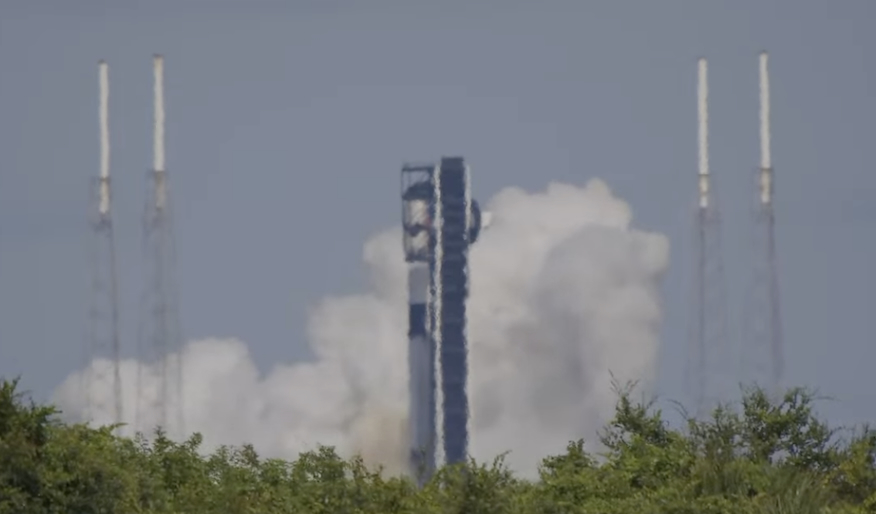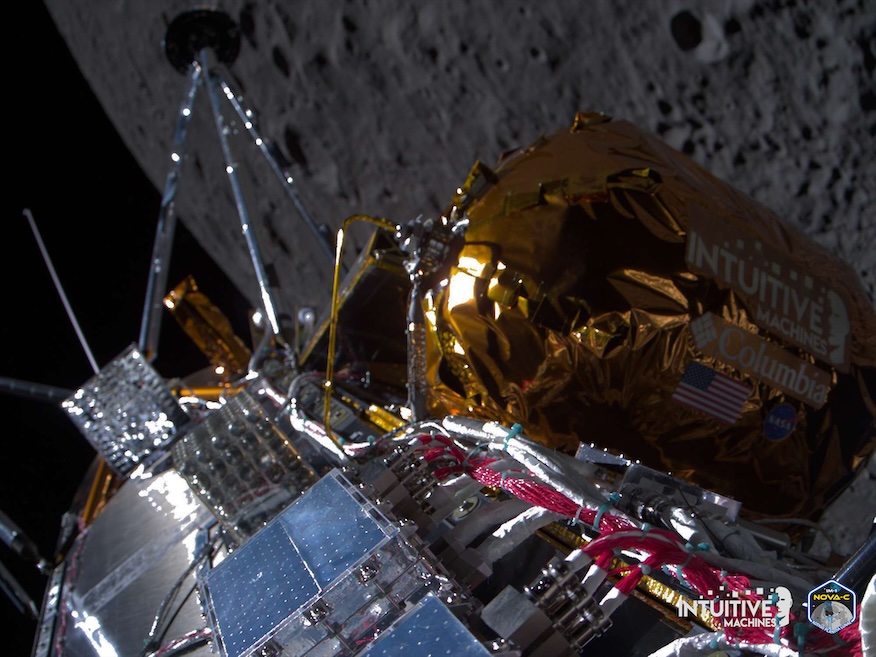
Update 10:57 am EDT: SpaceX confirms deployment of the second of two WorldView Legion satellites on this mission.
SpaceX launched a pair of Maxar Space Systems’ WorldView Legion satellites to a mid-inclination orbit Thursday morning. The 30 cm-class imaging satellites rode to space atop a Falcon 9 rocket launching from Cape Canaveral Space Force Station.
Liftoff from Space Launch Complex 40 (SLC-40) happened at the beginning of a 60-minute window at 9 a.m. EDT (1300 UTC). Those watching the launch in or around Florida’s Space Coast heard a sonic boom as the first stage booster returns for a touchdown on Landing Zone 1 (LZ-1) at the Cape.
Heading into the launch opportunity on Thursday, the 45th Weather Squadron forecast an 80 percent chance of favorable weather during the launch window. Meteorologists said a front pushing into the area “could generate some isolated showers and thunderstorms nearby the spaceport.”
The Falcon 9 first stage booster supporting this mission, B1076 in the SpaceX fleet, launched for a 16th time. It previously launched SpaceX’s 26th Commercial Resupply Services (CRS-26) mission to the International Space Station, a batch of 40 OneWeb satellites and eight Starlink flights, among others.
Nearly eight minutes after liftoff, B1076 touched down at LZ-1. This was the 43rd booster landing at this site and the 339th booster landing to date.
Deployment of @Maxar’s fourth WorldView Legion satellite confirmed pic.twitter.com/YEenvoUCah
— SpaceX (@SpaceX) August 15, 2024
Round two for WorldView Legion
The launch came about three months after the first pair of WorldView Legion satellites launched to a sun-synchronous polar orbit from Vandenberg Space Force Base. Maxar released images from those satellites within the past month.
Once all six of these satellites are on orbit, Maxar said it will be able to offer customers the ability to have a satellite view of a particular location up to 15 times per day.
WorldView satellites are designed to operate for ten years and offer high-resolution imagery. It does so using 8-band visible and near-infrared (VNIR) multispectral imagery.
The spacecraft are each 3m x 2m x 2m (9.8ft x 6.6ft x 6.6 ft) in size and have a dry mass of about 630 kg (1389 lbs.). They will orbit the Earth at an altitude of 518 km (321 mi.).

Maxar developed its own satellite dispenser for these missions. In a blog post about it earlier this month, it mentioned that the aluminum dispenser was used during the May 2024 WorldView Legion launch and it can be used by other customers whose satellites are built based on the Maxar 500 Series bus.
“Early on, we felt that when you design your own dispenser, you have more freedom,” said Wen Lee, a mission assurance engineer at Maxar who contributed to the dispenser design and development, said in a statement. “It gives us more freedom to design a spacecraft suited for the mission without being limited by the requirements of the dispenser interface offered by the launch provider in the end, it also costs less.”
The last pair of satellites is expected to launch later this year.
We designed a new, custom dispenser for launching the WorldView Legion satellites. It secures the satellites to the launch vehicle, protects them during launch, and helps deploy them into orbit. We worked with @ScotForge and Tech-Max to create the dispenser.
More details about… pic.twitter.com/dG8HYT247b
— Maxar Technologies (@Maxar) August 7, 2024



